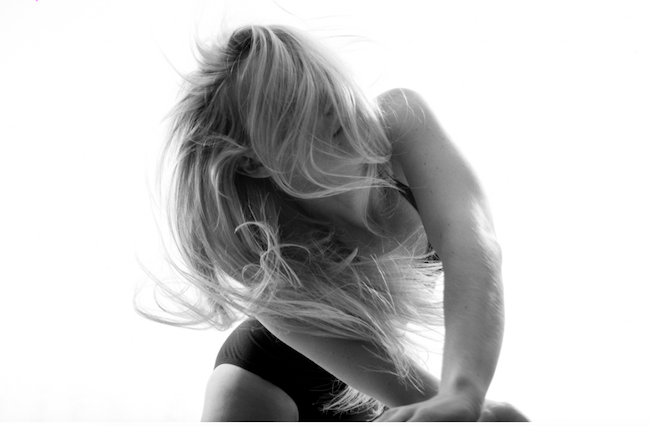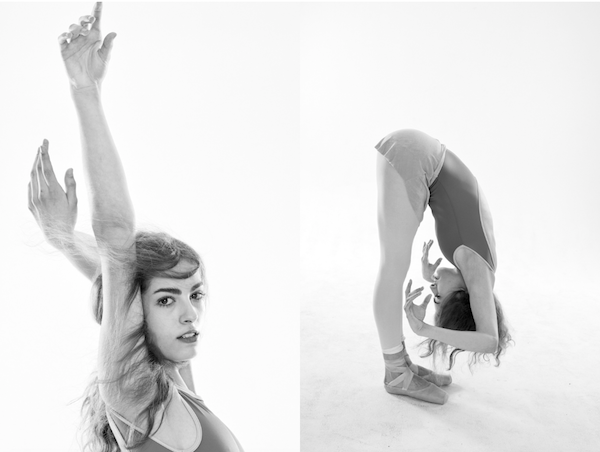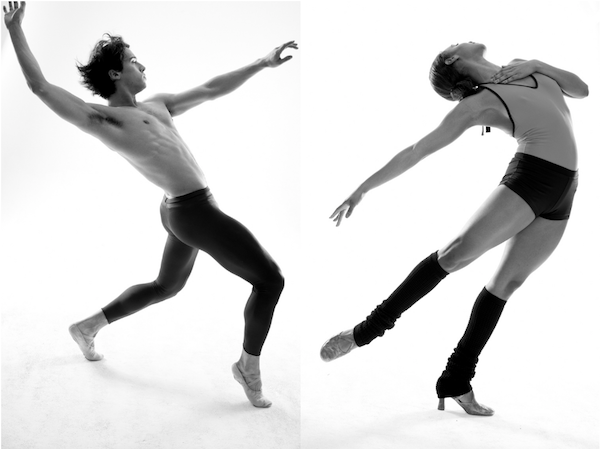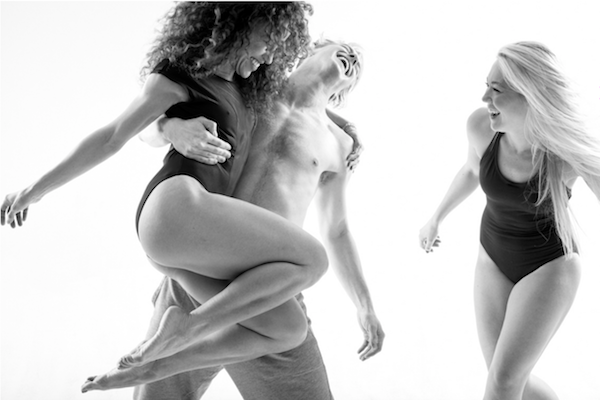 Terry Doyle is one of my favorite photographers to work with. Not only do we share a similar aesthetic, but we both have a deep appreciation for the beauty that’s created by dancers through their bodies and movement.
Terry Doyle is one of my favorite photographers to work with. Not only do we share a similar aesthetic, but we both have a deep appreciation for the beauty that’s created by dancers through their bodies and movement.
Recently, Terry completed a series of photographs with several professional dancers who work in some of Broadway’s biggest hits including American In Paris, Wicked, and Kinky Boots. She was kind enough to share some of her insights from that experience with me here.
EL: Your photographs have always had an element of movement to them. What led you to this dancers’ series?
TD: I went one night in February to see a performance of Alvin Ailey. That company has always been so inspiring to me – their amazing combination of grace and and control mixed with a soaring feeling of energy and freedom is magical! It was this performance that made me decide to set up a shoot with professional dancers.

EL: What makes a dancer’s body so unique to photograph?
TD: I don’t think it is a dancer’s body that is so unique (though they do have amazing bodies, don’t get me wrong!). It is how they know how to use them that makes photographing them such a pleasure. Dancer’s have been trained to know what lines and angles make the most pleasing, aesthetic visual impact. Mixing that technical knowledge with an amazing amount of pure energy is what makes shooting dancers so wonderful.
EL: You used to be a professional dancer. How has that experience informed your dance photography?
TD: Well, I guess knowing how to speak the language of dance is really helpful…I studied ballet, but ballet is in every form of dance. Knowing what a plié or a tendu or a pas de chat is, makes speaking and directing dancers that much easier.
EL: Please tell me a bit about the day of the shoot.
TD: We did two days of shooting, as I got such a good response from those I reached out to. Basically, they layed out their favorite rehearsal clothes, we picked out a cute leotard or sweats for them to wear, then I just turned on their favorite music (anything Duke Ellington and Aretha Franklin to Britney Spears and Madonna), and told them to dance in a way that made them feel their best. They kind of took over from there. It was very improvisational – and each dancer clearly had one or two things (a jump, a back bend, a certain turn) that they loved. I don’t think any of them did choreography from the shows they are in – it was just all more personal, simply move in a way that makes you feel good. As if you were in your room by yourself, turned on your favorite song, and truly just let loose. The only difference is that every move these dancers did looked unbelievably perfect!

EL: In your photographs, the dancers look so effortless. What were some of the challenges in working with these bodies in movement?
TD: The challenge was getting that perfect moment, but also getting photos that did not look like they were performing. I wanted to capture their raw energy, and how amazing that feels as a dancer. I wanted my pictures to make the viewer feel happy and uplifted by looking at them – kind of like how I felt after seeing Alvin Ailey perform…
EL: When you first took on this project, what were you hoping to achieve?
TD: So often dance pictures, to me, are too perfect. The dancers are often in full makeup, with costumes on, and in very controlled studio lighting. It makes dancers seem “other”, kind of alienated from me as the viewer …I wanted these pictures to be more intimate and personal, less formal. I wanted to capture dancers as they are when they are rehearsing a favorite piece. So that the pictures are a bit less structured and set up, a bit more natural and fun and free. There is nothing that feels as good to any dancer as rehearsing a piece that you love – you can go full out in your favorite rehearsal clothes, there is no audience there, it’s more casual and real, but can also be more personal and intimate, than an actual full-fledged performance.

EL: What else came out of this project? Anything unexpected?
TD: It was amazing how many of the dancers knew each other! I had scheduled each dancer to come in about one hour intervals, so while I was shooting one, the other would arrive. More times than not, I ended up shooting 2 or 3 dancers together, because they were not only friends, but were performing with each other in the same show.
EL: What’s next for Terry Doyle photography?
TD: To keep exploring how to capture pure energy in my pictures. Movement is one of my favorite things to photograph. But energy can come from other sources too – and that is what I am always thinking about and working on.
Thank you, Terry!
See more of Terry’s work here: www.terrydoylephoto.com
facebook: facebook.com/elyshalenkin
twitter: @elyshalenkin
instagram: elysha_nyc
Follow my blog with Bloglovin
